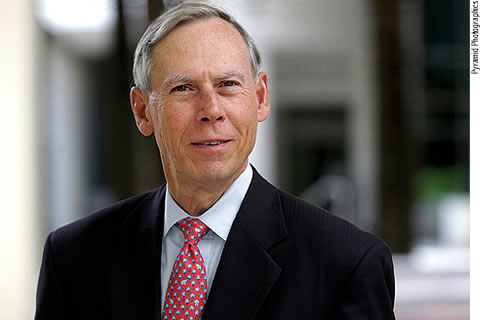
Contrary to some perceptions, the University
of Miami Miller School of Medicine is not an island. As the
only academic medical center in a continuously growing region,
the Miller School is a unique institution and has a very
specific role and responsibility to fulfill in advancing
knowledge, training health care providers, and caring for
patients and their families.
Academic medical centers do not exist for
themselves—they
are institutions that are expected to provide leadership in
health care service delivery, health policy, and community
outreach to guide and provide mechanisms by which the overall
health status of the community can be improved. Academic medical
centers are rightly expected to produce the next generation
of health care providers, particularly physicians, and through
the interaction with community-based providers and hospitals
throughout the region, they are intended to have a general
uplifting effect on the quality and capability of health care
services. This is the view maintained by the Miller School’s
leadership team.
One can say that the Miller School should
expand the role of UM’s medical enterprise to the greater community, but
if you can’t execute on the fundamental things back on
home base, then you can’t really deliver in the best
way possible in broader initiatives. So one area the leadership
team will be focusing on is organizational effectiveness: how
we make decisions; how we organize to execute on decisions;
the rigor with which we measure how we’re performing;
the willingness to be honest with ourselves and with our employees
about whether things are going well or not; the ability to
have employees feel engaged with what the institution is trying
to accomplish; and the ability to reward people when things
go well.
If the institution is not measuring up, there
are reasons why. It’s a matter of diagnostics and therapeutics. You cannot
solve a problem you do not understand, and you cannot understand
that there’s a problem if you are not measuring against
a definition of success.
We’re in the process of strategic plan development to
define together what we want to measure and how. This process
will set objectives and help the school decide where to spend
its energy.
Places like UM are idea factories—there are new notions
and new possibilities that arrive every day. If you chase every
one of them, then you dissipate the institution’s capability
to execute them. You have to choose some things that are important
to do, and you focus on those until they’re done. Otherwise
employees come to work, and they don’t have a context
for what the institution is trying to do. Human beings don’t
function well without a context. It’s true in our everyday
lives. We have our view of what’s going on around us
and where we fit into it and what’s important and what’s
not—and if the leaders of the institution are not effectively
communicating a context for the work its people do, then they’ll
make up their context as best they can, and they may well not
get it right. Some organizations work better than others, and
if you look at the ones that work well, the mission of the
organization is clear to everyone who works there.
Some would say this is just common sense,
but there’s
more to it than that—there are many sophisticated things
one can and should do in a complicated institution such as
the Miller School. But there’s no substitute for clear
communication and clear thinking, and that applies to all of
us. And that will be how we move the institution into the future
and as one of the country’s premier academic medical
centers.
William Donelan is vice president for medical
administration and chief operating and strategy officer of
the Miller
School of Medicine. |